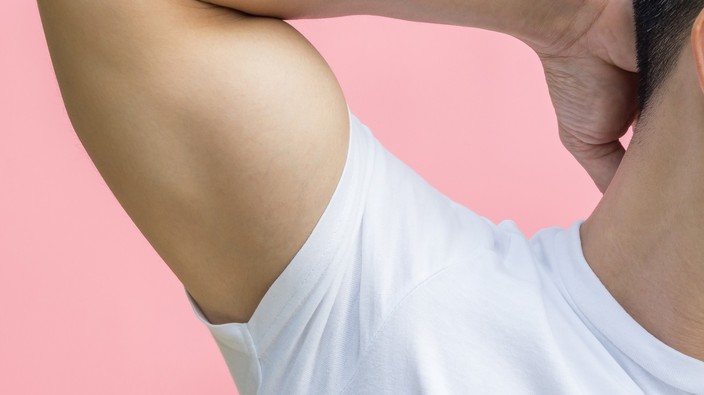they itch. they smell. they sweat. what exactly is the point of the armpit?when you think about it, we spend a weird amount of time shaving, waxing, deodorizing, and tending to a seemingly useless part of the body. nobody
likes armpits. you would think they’d be like the back of the knee: an innocuous bit of skin and muscle that minds its own business while making sure one part of a limb is joined correctly with another.but no, the armpit actually does some critical stuff — the least of which includes ruining white shirts for people everywhere.
one of the warmest areas of the body, the armpit, or axilla, performs its most important function as home to more than 20 lymph nodes called the
axillary lymph nodes. the axillary lymph nodes oversee the regulation and filtration of lymph through the upper limbs and back.
lymph transports oxygen, hormones and nutrients throughout the body while removing metabolic waste from cells.the axillary lymph nodes are quite small and generally cannot be felt by touching your underarm.
why do armpits smell? sweating is the body’s way of cooling us down and a lot of that sweat is produced in the armpit, which has a high concentration of two types of sweat glands:
eccrine and apocrine.eccrine glands are more abundant throughout the body and produce an odourless liquid that aids in temperature control, while apocrine glands, found in areas with more hair follicles (armpits, scalp, groin), emit a thicker liquid. when the fluid produced by these glands mixes with the bacteria on the surface of the armpit, you get body odour.the kind of odour you produce is dependent on
many factors, including what you eat or drink and or the medication you take.and those yellow pit stains you might get on an old white t-shirt? don’t blame your diet or sweat. the yellowing is
caused by a chemical reaction between your sweat and the aluminum in your deodorant.armpit odour may also contribute to the mating process. whether you think it’s nasty or not, human sexual instincts are driven, in part, by
how we perceive each other’s scent. there is even
some research that men find women most attractive when they are ovulating.
what’s with the hair? while western culture and
social constructs have led to the common practice of shaving or waxing underarms, it wasn’t always the case. north american women only started routinely shaving the region
in the 1920s.
and while the function of underarm hair does remain a bit mysterious, there are a few theories about its purpose. the sweat produced by the apocrine glands clings onto the pit hair, meaning that scent we produce is due partially to the hair. for better or worse,
there is evidence that shaving the region can significantly reduce the amount of b.o. produced by men. another reason the region is hairier than most is to
reduce the friction between the arms and torso while we walk or run.
do armpits come with health risks?breast cancer spreads often spreads to the lymph nodes located in the armpit before any other region. a doctor may check those axillary lymph nodes to help determine the stage of the cancer. in fact, these nodes are actually a good indicator of something else happening in the body as they tend to swell when we are fighting an infection. lumps in the armpit can be related to several other more serious conditions as well,
according to healthline, such as bacterial or viral infections, lipomas (typically harmless, benign fat tissue growths), adverse reactions to vaccinations, lymphoma and leukemia.more commonly though, the issues we have with our armpits are dermatological. excessive sweating, dermatitis, allergic reactions, and
psoriasis are all
common conditions affecting the armpit.
nick beare is a writer with healthing.ca.
 3 minute read
3 minute read








